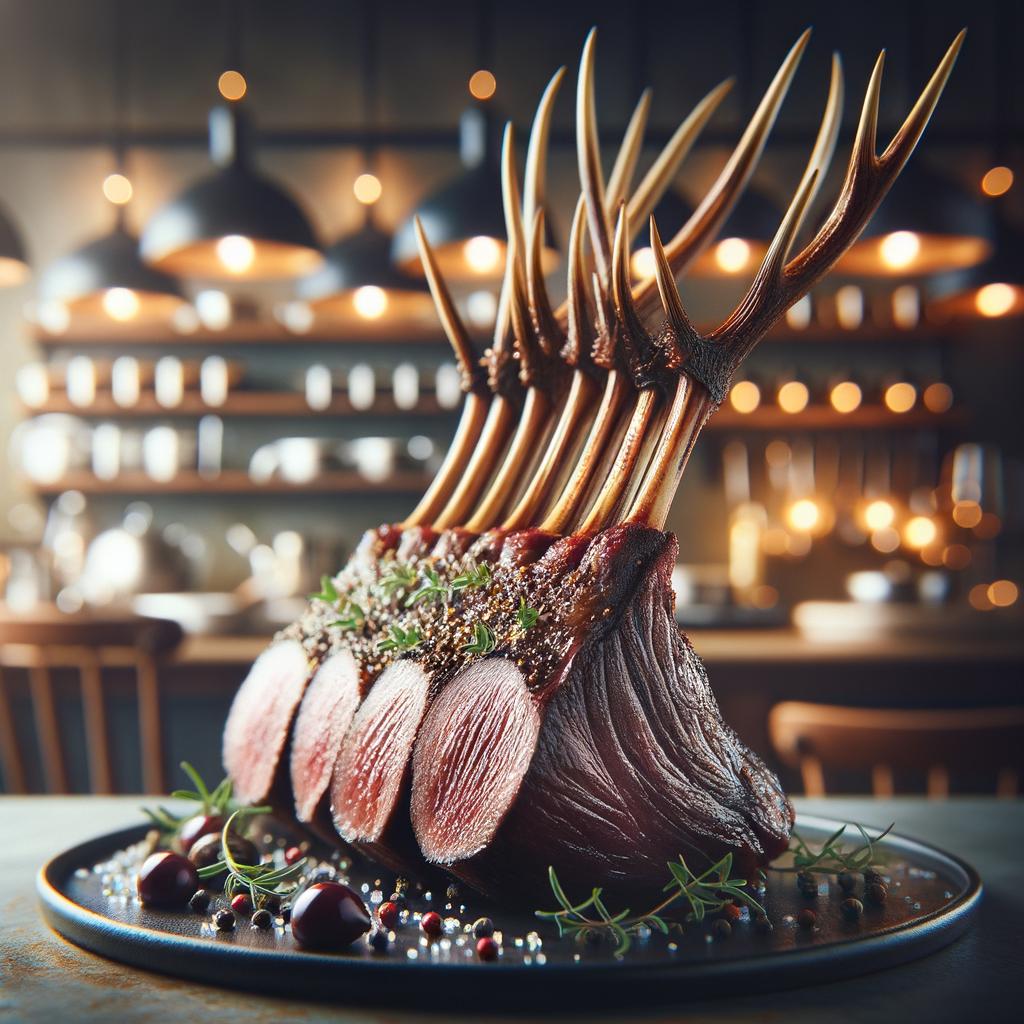Rack of Venison

Description
Our ingredient spotlight today beams on the regal rack of venison, a delectable cut of meat from the deer family, which includes species like the white-tailed deer, mule deer, elk, and moose. This cut is characterized by its lean, deep-red meat, held together by a latticework of bone that adds a touch of rustic elegance to any plate. The texture of venison is finer and firmer compared to beef, and its flavor profile is robust, slightly sweet, and distinctly gamey, a testament to the wild pastures and forests that are the deer's natural habitat. What sets venison apart from other game meats is its lower fat content, making it a healthier, albeit richer, alternative.
Primary Uses
Rack of venison is a versatile ingredient that lends itself well to a variety of cooking methods. It can be roasted whole, cut into individual chops, or slow-cooked to bring out its tender, succulent nature. It stars in a plethora of dishes across different cuisines, from the hearty venison pie of the British Isles to the sophisticated French dish of venison with red wine sauce. Beyond the culinary world, venison has been used in traditional medicine to treat conditions such as anemia and fatigue. Its antlers, in particular, hold a special place in many cultures, symbolizing strength and virility.
History
The history of venison is intertwined with the narrative of human survival and progress. Our prehistoric ancestors relied heavily on deer for sustenance, and the skill of hunting was a rite of passage for young men in many tribes. Over time, venison moved from the fires of the hunter-gatherers to the royal tables of medieval Europe, becoming a symbol of status and power. The tradition of the hunt became an aristocratic pastime, and venison was often the prized catch. Today, venison is enjoyed by a wider audience, its consumption no longer restricted by class or status.
Nutritional Information
Venison is a nutritional powerhouse. It is high in protein, providing essential amino acids for muscle repair and growth. It is also rich in iron, which aids in the production of red blood cells, and vitamin B, which supports a healthy nervous system. Despite its rich flavor, venison is low in fat compared to other red meats, making it a healthier choice for meat lovers. However, due to its gamey nature, it may not be suitable for those with sensitive palates or certain dietary restrictions. As always, it's important to consume venison, like all meats, in moderation as part of a balanced diet.

